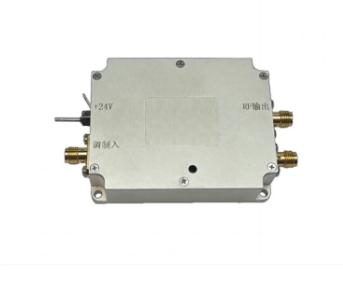Impact of Semiconductor Doping Profiles on N-Type Acousto-Optic Driver Efficiency

Acousto-optic (AO) devices play a crucial role in modern photonics, enabling applications such as laser beam modulation, frequency shifting, and optical signal processing. The efficiency of these devices heavily depends on the performance of their drivers, particularly those based on N-type semiconductors. One critical factor influencing driver efficiency is the doping profile of the semiconductor material.
Understanding Doping Profiles in N-Type Semiconductors
N-type semiconductors are created by doping intrinsic materials (like silicon or gallium arsenide) with donor impurities such as phosphorus or arsenic. The doping concentration and distribution significantly affect carrier mobility, resistivity, and overall electrical performance.
There are two primary doping profiles:
Uniform Doping – Impurities are evenly distributed, providing consistent conductivity.
Graded Doping – Impurity concentration varies with depth, optimizing electric field distribution.
Impact on Acousto-Optic Driver Efficiency
The efficiency of an AO driver depends on how effectively it converts electrical signals into acoustic waves that modulate light. Key factors influenced by doping profiles include:
1. Carrier Mobility & Resistivity
Higher doping concentrations reduce resistivity but may increase carrier scattering, lowering mobility.
Graded doping can enhance electron drift velocity by creating built-in electric fields, improving high-frequency response.
2. Electric Field Distribution
Uniform doping may lead to uneven electric fields, causing power losses.
Optimized graded doping ensures smoother field distribution, reducing heat generation and improving energy transfer efficiency.
3. Thermal Management
High doping levels increase current density, leading to Joule heating.
Tailored doping profiles help distribute heat more evenly, preventing hotspots that degrade performance.
4. Frequency Response
For high-frequency AO applications (e.g., RF drivers), graded doping minimizes signal attenuation by reducing parasitic capacitance effects.
Conclusion
The doping profile of N-type semiconductors directly impacts the efficiency of AO drivers. While uniform doping offers simplicity, graded or optimized doping profiles enhance carrier dynamics, thermal stability, and high-frequency performance. Future advancements in doping techniques, such as delta doping or superlattice structures, could further push the limits of AO device efficiency, enabling faster and more reliable photonic systems.
By carefully engineering semiconductor doping, researchers and engineers can unlock higher-performing AO drivers, paving the way for next-generation optical technologies.
- Art
- Causes
- Crafts
- Dance
- Drinks
- Film
- Fitness
- Food
- Games
- Gardening
- Health
- Home
- Literature
- Music
- Networking
- Other
- Party
- Religion
- Shopping
- Sports
- Theater
- Wellness


